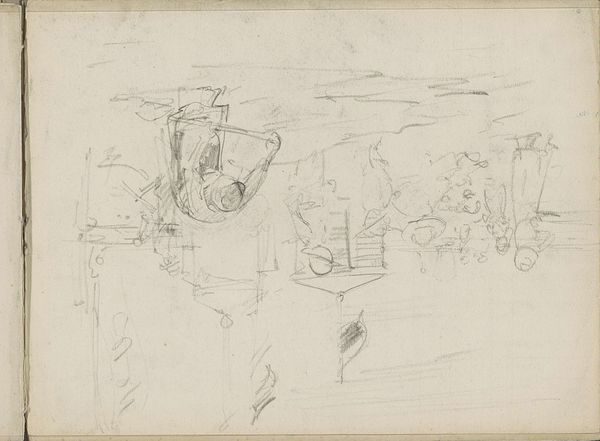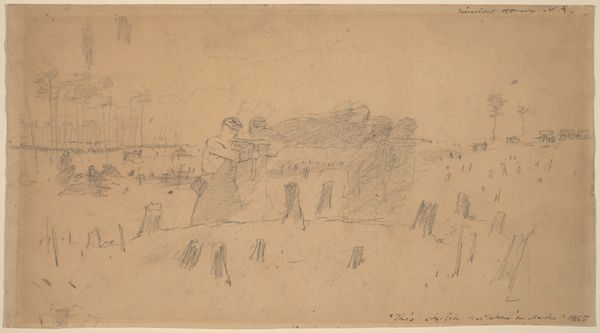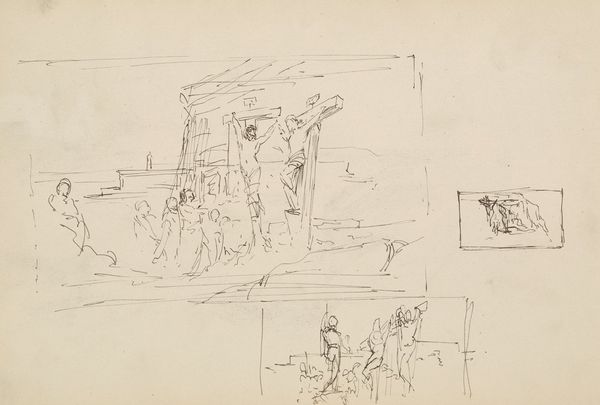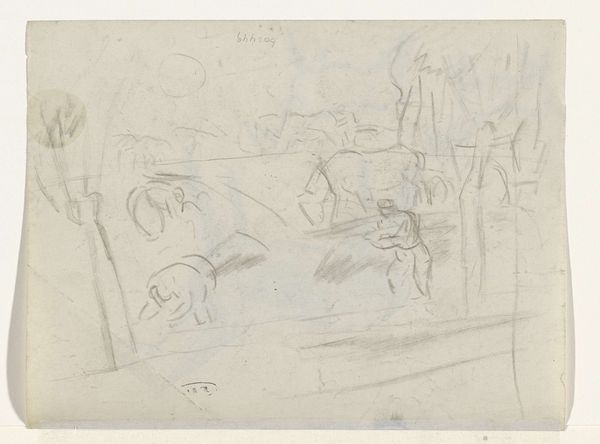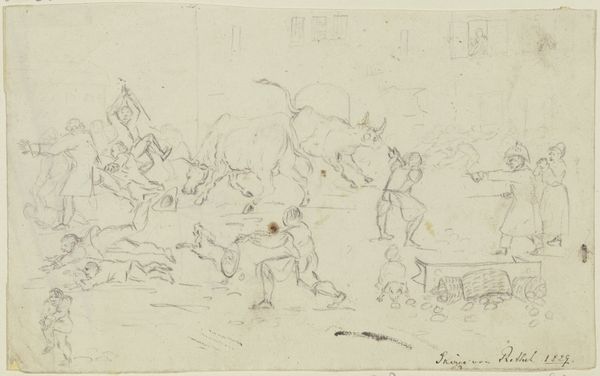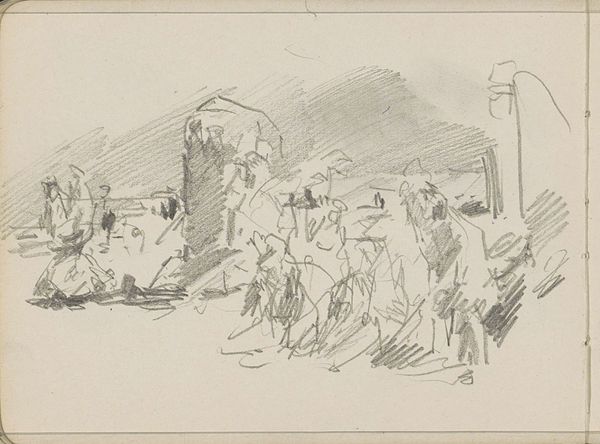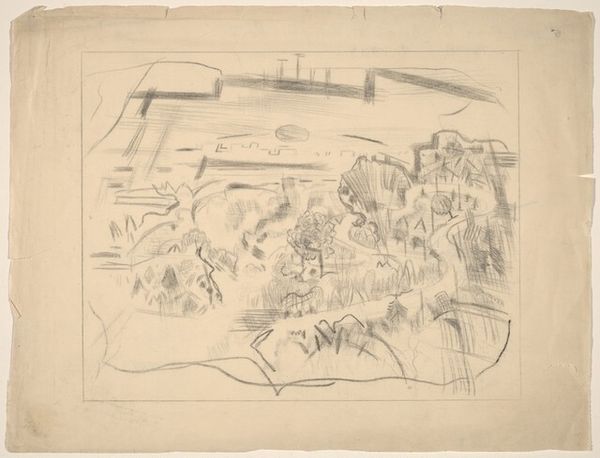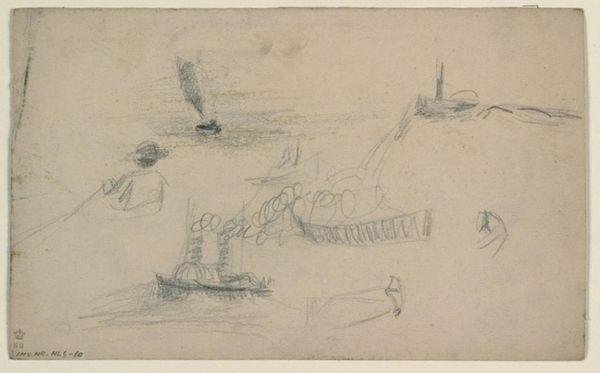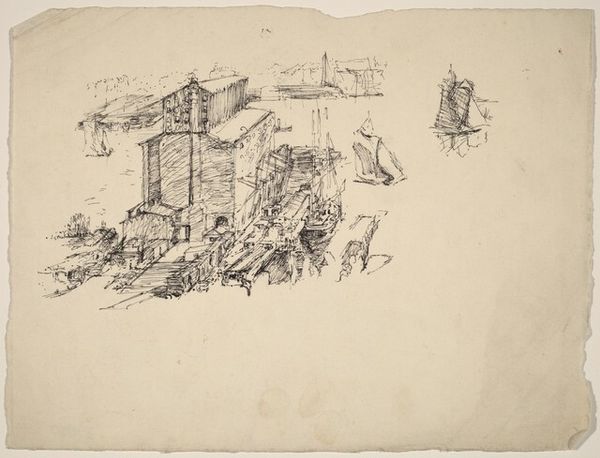![Battlefield Scenes [verso] by Charles Hoffbauer](/_next/image?url=https%3A%2F%2Fd2w8kbdekdi1gv.cloudfront.net%2FeyJidWNrZXQiOiAiYXJ0ZXJhLWltYWdlcy1idWNrZXQiLCAia2V5IjogImFydHdvcmtzLzI4OWNiNjI4LTdjMjQtNGU0Yi1hMTdiLWY2ZTQzYWE0YmFkOC8yODljYjYyOC03YzI0LTRlNGItYTE3Yi1mNmU0M2FhNGJhZDhfZnVsbC5qcGciLCAiZWRpdHMiOiB7InJlc2l6ZSI6IHsid2lkdGgiOiAxOTIwLCAiaGVpZ2h0IjogMTkyMCwgImZpdCI6ICJpbnNpZGUifX19&w=1920&q=75)
drawing
#
drawing
#
narrative-art
#
landscape
#
history-painting
#
realism
Dimensions: overall: 27 x 36.8 cm (10 5/8 x 14 1/2 in.)
Copyright: National Gallery of Art: CC0 1.0
Editor: This is *Battlefield Scenes*, circa 1914-1918, by Charles Hoffbauer, a drawing. It's quite skeletal, more of a series of impressions than a finished work, yet the repetition of figures in action lends it a haunting quality. What do you see in this piece? Curator: The most potent element, for me, is how these fragmented images mirror the fragmented psyche of a soldier experiencing warfare. Each panel seems to trap a memory, a flash of horror, but the overall composition prevents any single event from becoming too overpowering. Do you notice how the eye jumps from scene to scene? Editor: Yes, the separate panels almost feel like snapshots of distinct moments. They create a sense of continuous, yet disjointed, activity. There’s a dreamlike quality because of the sketch-like quality. It feels fleeting, unreal, like the memories are already starting to fade. Curator: Precisely. This fading, or perhaps the attempt to process trauma, speaks volumes. Hoffbauer doesn’t present a glorification of war, but a visual record of the psychological impact, how the mind grapples with horrific events by breaking them down, compartmentalizing them, almost like a ritualistic burial. It asks: How do we memorialize conflict, not just as victory or loss, but as enduring human experience? Editor: That's a powerful idea – that the very incompleteness of the work adds to its meaning. It is about cultural memory not in grand statements, but in fractured whispers. Curator: Yes, it reveals cultural memory through absences as much as presences, which can often be more impactful, inviting the viewer to fill the gaps with their own understanding and empathy. Editor: I hadn't thought of it that way. It really reframes how I see war art in general. Curator: Me too; I noticed new ways of interpreting cultural memory of conflict.
Comments
No comments
Be the first to comment and join the conversation on the ultimate creative platform.
